There are a number of quality fly control products; however, extended use of one product will cause flies to develop a resistance over time, and the product will become less effective.
The best way to control flies is through the implementation of an integrated fly control program.
Your solution
An effective fly control program uses a combination of products (larvicides and adulticides) that attack different types of flies at different stages of the fly life cycle with various environmental, biological and chemical techniques.
When choosing a product that’s best for your operation, it’s important to know what type of insect is controlled or reduced with use, what stage it’s in and which technique to use:
Types of flies
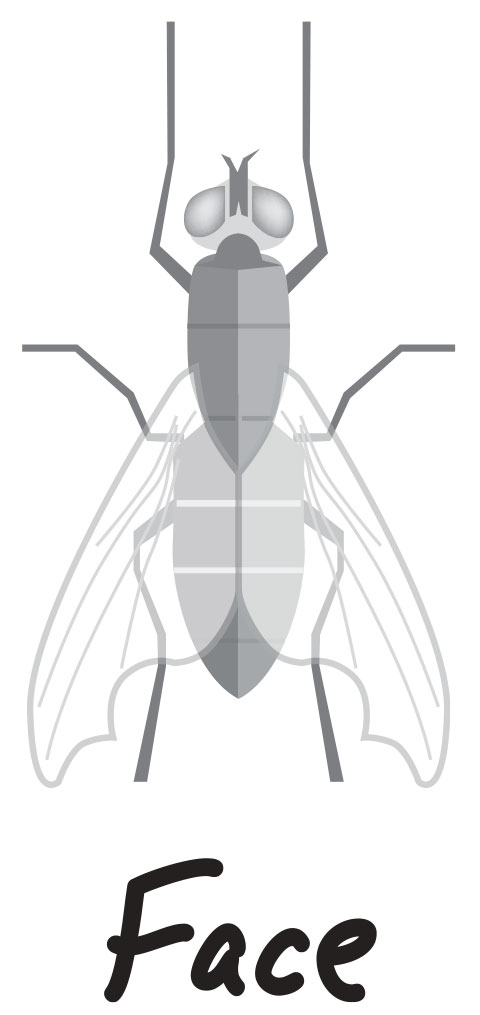
Face fly (Musca autumnalis)
• Non-biting fly; measures
6 to 8 millimeters
• Direct transmitters of pinkeye
in cattle
• Larvae grows in freshly deposited
cattle manure
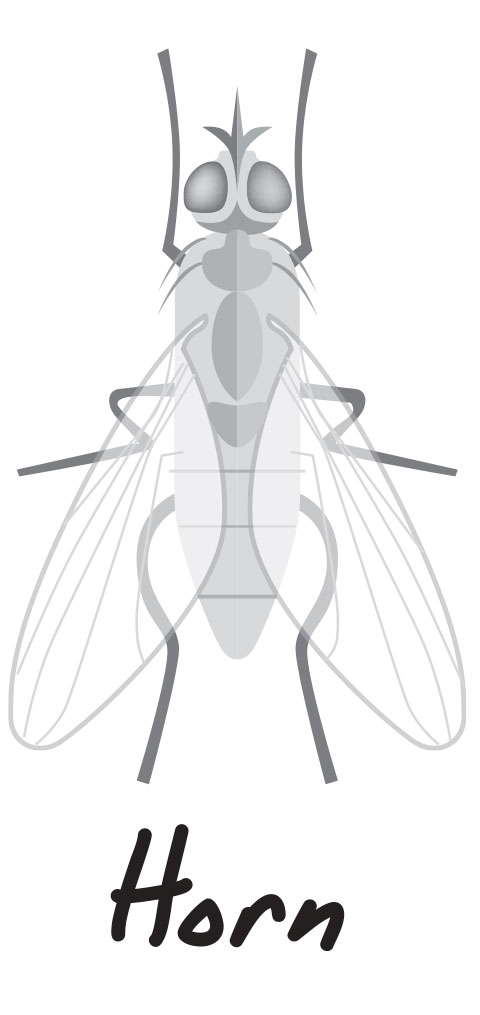 Horn fly (Haematobia irritans)
Horn fly (Haematobia irritans)
• Blood-feeding fly; measures
4 to 5 millimeters
• Stays on cattle after feeding
• Moves to the underside of cattle
during rain and hot temperatures
• Carries diseases that decrease
weight gain and lower milk
production
• Larvae grows in cattle manure
(does best in grass manure of
pastured cattle)
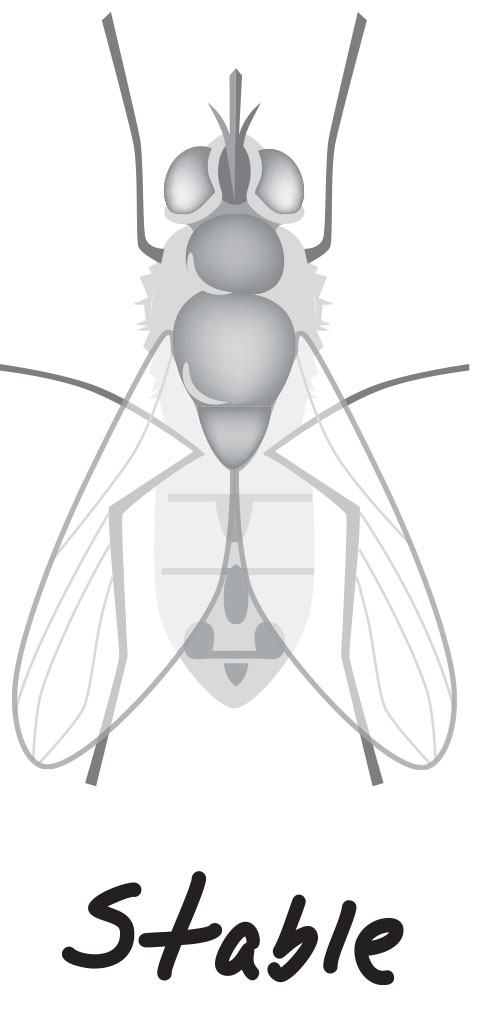 Stable fly (Stomoxys calcitrans)
Stable fly (Stomoxys calcitrans)
• Nuisance blood-feeding fly; measures
6 to 8 millimeters
• Interrupts cattle’s normal feeding
and resting activities
• Larvae grows in wet manure mixed
with soil, straw, bedding material,
silage or grain
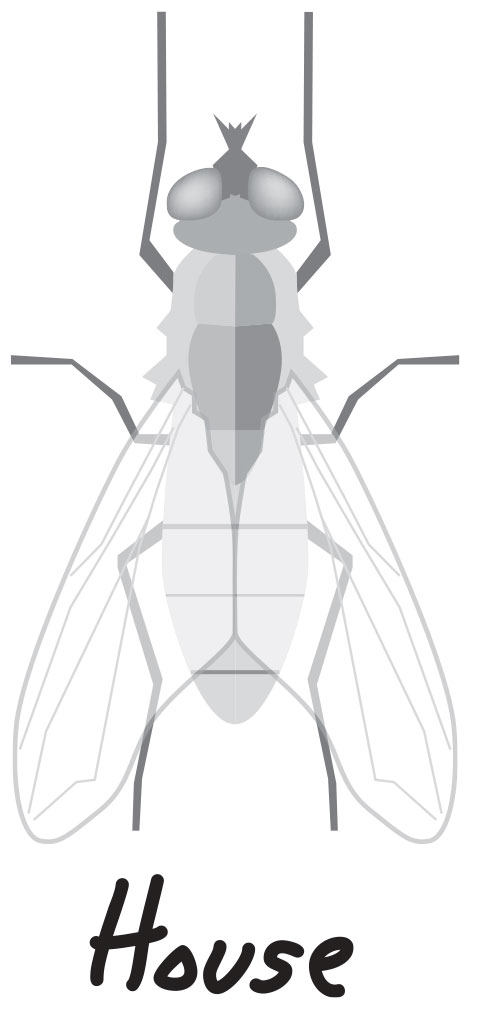 House fly (Musca domestica)
House fly (Musca domestica)
• Non-biting fly; measures
6 to 9 millimeters
• Most abundant insect associated
with cattle but causes the least
amount of harm
• May cause ear flapping, head
shaking or pen avoidance
• Larvae grows in virtually all
substrates including feed, manure
and vegetation
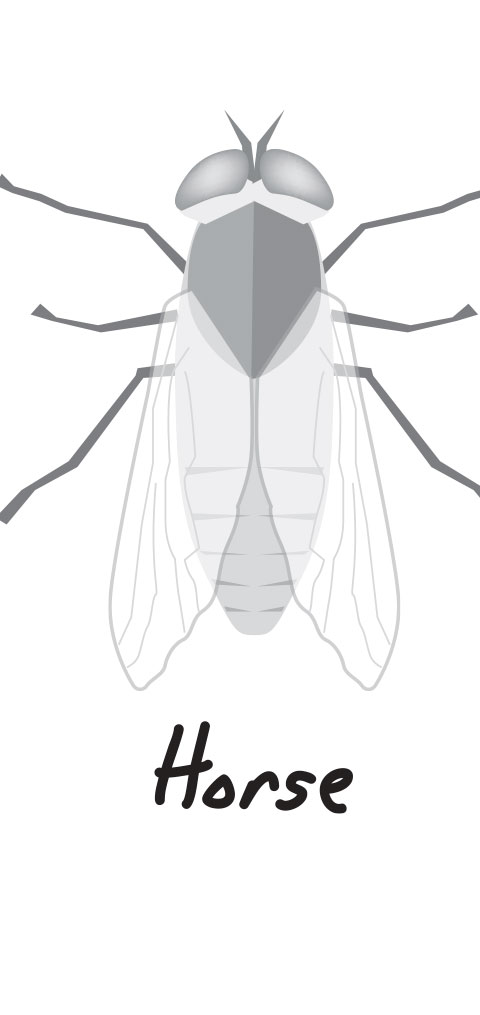 Horse fly (Tabanus lineola)
Horse fly (Tabanus lineola)
• Bloodsucking fly; measures
19 to 25 millimeters
• Numerous painful bites can
cause a significant loss of blood
• Larvae grows in mud along pond
edges, stream banks, wetlands or
seepage areas
Fly stages
• Larvicides – Insecticides targeting the larvae stage of a fly (Larvicides come in a variety of forms including biologicals, baits and feed additives.)
• Adulticides – Insecticides used to kill adult flies (Adulticides are available in baits, sprays, pour-ons and traps.)
Fly attack techniques
• Environmental – The proper management and sanitation of manure, feeds and facilities
• Biological – Enhancement of the naturally occurring populations of fly predators and parasites
• Chemical – Pour-ons, sprays and baits used in conjunction with environmental and biological techniques to achieve desired degree of fly control (Rotate yearly to avoid resistance.)
Ask your veterinarian if you need assistance developing a comprehensive fly control program. ![]()

-
Jim Heier
- Professional Services Veterinarian
- Animart
- Email Jim Heier







